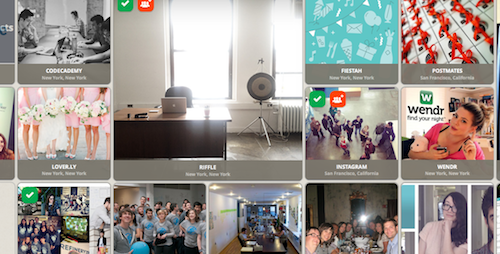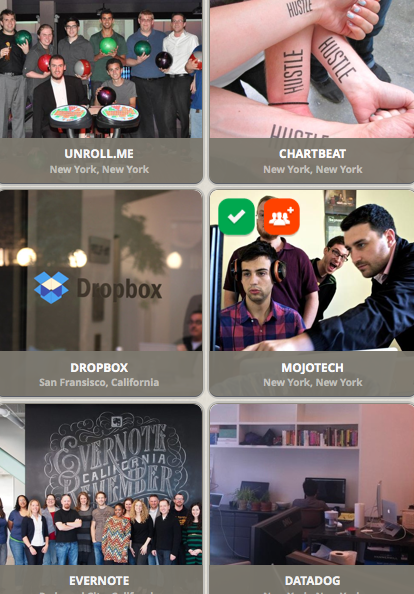
Image Credit: Screenshot capture from insidestartups.org
In a recovering service economy like ours, young job seekers face a different set of choices than they might have a decade or two ago. The prohibitively high cost of obtaining a traditional college degree--along with a lot of other economic factors--are changing not only the kinds of educational models available to young people, but also the career paths they are taking. One of the more common entry points to the workforce these days are Internet start-ups. Relative to their size they are better job creators than established companies and offer attractrive employment for all kinds of talent, from Ivy League grads to self-taught computer programmers.
If these sorts of trends interests you, there are plenty of ways to keep tabs on the start-up sector; TechCrunch, Venture Beat, and the New York Times Bits Blog aren't bad places to start. The coverage you'll see in these publications is focused on companies' products and business strategies. If you're interested in the culture of start-ups--the selling point for so many employees--then the visual database insidestartups.org is the place to look. This searchable gallery of start-ups, designed to connect companies and employees, is the best way to visualize the industry from a macro point of view, but also from the inside out. I recently used the site to teach rhetorical analysis, but its content strikes me as valuable in other ways. The website's prominent montage of profile pictures gives viewers a macro sense of the new startup "cohort," and individually, the images suggest possible values and directions for the new American workplace.

Image Credit: Screenshot capture from insidestartups.org
The website is organized like a social network, with an image and associated page for each business. Visitors can search for specific kinds of start-ups by selecting for location, company type, funding round, etc. Some businesses place their logos front and center to attract recruits; others showcase their office space. The average picture of a start-up working space is what you would expect: there are no divisions between individual work stations, and employees crowd around an assortment of Mac devices to harness the wisdom of the team. Some pictures are surprisingly honest about the humble working conditions that come with the territory. (See Riffle's picture, up top, of a lonely desk and MacBook).

Image Credit: Screenshot capture from insidestartups.org
But as with all emblematic representations, these images can't be taken at face value as direct windows onto start-up life. Each advocates for the "philosophy" or "culture" of particular start-up company, and a significant number do this by projecting a unique brand of "fun." Many featured companies convey their fun sides by channelling the college fraternity (see Mojotech's bro huddle above) or posing as enthusiastic camp counselors (see Getglue, second screenshot, top right). But for every few pictures of togetherness--the kind you thought only existed in freshman dorms--there's an image that suggests hard work, dedication, even sacrifice (see Datadog's picture of a lone worker manning an empty, cluttered office). Whether or not these representations are faithful to reality, the members of Inside Startups presumably know how to appeal to bright young employees. By cultivating the appearance of a collegiate atmosphere are they offering a substitute for college to those who never experienced it? Or are they just catering to twenty-somethings that don't want to leave the warm embrace of college behind?
It can't give us the whole picture, but Inside Startups is certainly an informative source for educators who aim to prepare students for future careers. Knowing the look and feel of these careers seems like a necessary part of this pedagogical effort.
Recent comments
2 years 29 weeks ago
2 years 44 weeks ago
2 years 44 weeks ago
2 years 50 weeks ago
3 years 4 weeks ago
3 years 4 weeks ago
3 years 4 weeks ago
3 years 6 weeks ago
3 years 6 weeks ago
3 years 6 weeks ago